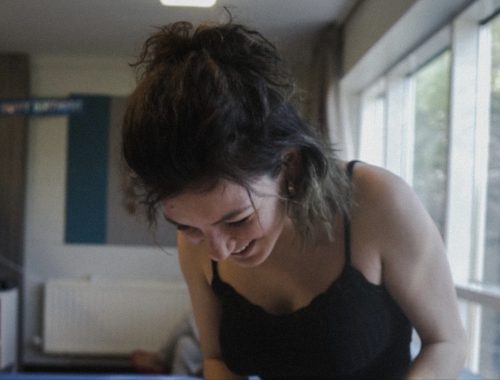Show, Don’t Tell!
The daunting anticipation of Interviews has always triggered my nerves. Although it seems as if I can never release the butterflies in my stomach for this specific situation, I have discovered methods on how to control them through a simulated interview process which recently ran in the “AEL3001: Work-based Learning” module.
During this experience, I was placed into a group consisting of five people with a different mix of hopeful career paths. Mine was tailored to composing for screen, however, the others included teaching and working in the music production section of broadcasting companies. Each person took it in turns being the person who was interviewed by the other four and had to answer questions tailored to the job descriptions of the career they wanted to apply for. Because I was last to be interviewed, I was able to listen to and learn from the previous candidates’ responses to the questions. One interview that resonated with me was when the candidate was asked if they had ever shown to be cooperative in a working environment to which they responded with, “Yes.” Of course, you cannot leave your answer at that and elaboration is vital, so then they employed the STAR method to explain a time in which they were able to work well with others. The STAR method is used to correctly structure an answer to an interview question where you are explaining a situation and how you dealt with it. Shown below indicates what their answer was:
Situation: A young new start in the interviewee’s workplace was being ridiculed behind their back for tasks they did not know how to properly complete.
Task: To work in cohesion, the young new start needed to be trained in these tasks and not made fun of for not understanding what to do.
Action: The interviewee explained how they took the young new start under their wing and completed each task with them to build up their skill level. Additionally, the interviewee told other colleagues to help instead of being judgemental.
Result: Not only was the member of staff treated more respectably, but their level of skills increased, boosting the team’s work ethic. The interviewee also stated that they acquired a new skill in mentoring someone and their level of confidence was boosted as a result.
For me to fully reflect on how this situation could influence me in my interview skills I used the Rolfe, Freshwater, & Jasper ‘What’ Model (2001) to demonstrate the impact:
What: I witnessed the candidate use the STAR method to explain a situation in which they demonstrated a skill in their working environment and how they related that skill to the job that they were applying for.
So What: I was impressed with the structure of the answer as it kept each important detail in place and sounded professional.
Now what: I felt I could tailor this structure and answer to fit into my interview. For example, I continuously help new staff in my part-time job build up their work skills, so if I was working with a team to compose a score for screen, I would make sure each member felt comfortable in their capabilities to work together to produce a quality piece of music.
When it came my time to be interviewed, the job I was applying for was listed to be a composer’s assistant for video games. I was sure to use the STAR method to lay out my answers and avoid repeating myself or blanking during a question. When I was asked if I had experienced any failures in my life and how I overcame them, this was my structure for my answer:
Situation: I received a low mark in my AS Level composition
Task: The marking criteria had a set level of guidelines to be met to receive a high mark for the composition
Action: I reattempted the AS Level composition the next year paying attention to the mark scheme and did the same for my A2 Level composition additionally.
Result: I received a high mark for both compositions and learnt a valuable lesson to always follow the brief in detail of a task to succeed.
After the interview, I was pleased with the feedback I received as it had referenced some key points that I wanted to achieve in my answers:
- The candidate used STAR technique very well and understood every question
- Seth related his responses to his experiences in the composition field, he drew upon his composition experience for answers to all questions. Seth drew upon his compositional experience right back to A levels until now which displayed his growth and development.
As you can see, using the STAR method had a great impact on my interview. The second point referenced that I was able to explain my skills relating to the compositional field in detail over the past few years instead of just letting the interviewer know what I could do. I adopted this method called “Show, Don’t Tell,” when I was writing essays in school to elaborate on key points to leave an impression on the reader.
Additionally, I received feedback on what I could improve on:
- Seth could expand even more on his composition style and experience, as the way he speaks about this is very interesting and engaging.
- Seth admitted he could maybe not use the word ‘Um’ as much while speaking
So, to improve from this constructive criticism, I referenced back to the Rolfe, Freshwater, & Jasper ‘What’ Model (2001).
What: The feedback made notes of needing to expand more on my composition style and experience and refrain from using the word ‘Um’ while speaking.
So What: Expanding on my composition style will indicate I have skills in creativity, technology, self-awareness and marketing. Refraining from using the word ‘Um’ will come across more professionally when speaking and show signs of confidence in my answers.
Now What: Diving into my portfolio of work and using music composition terminology (e.g. use of striking motifs, impactful key changes, unique melodic lines) will be essential to stand out in an interview. Practising speaking long sentences in front of peers without using the word ‘Um” will allow me to become more well-spoken and assertive.
Reflecting on this event has boosted my understanding of how to relate my subject to the working environment, given me a clearer idea on how to speak more confidently and professionally in my answers, and will further boost my passion for carrying out tasks in my ongoing placement.
References:
Rolfe, Freshwater, & Jasper ‘What’ Model (2001)
You May Also Like

So You Want To Be A Teacher?
17 February 2022
9 February 2022

